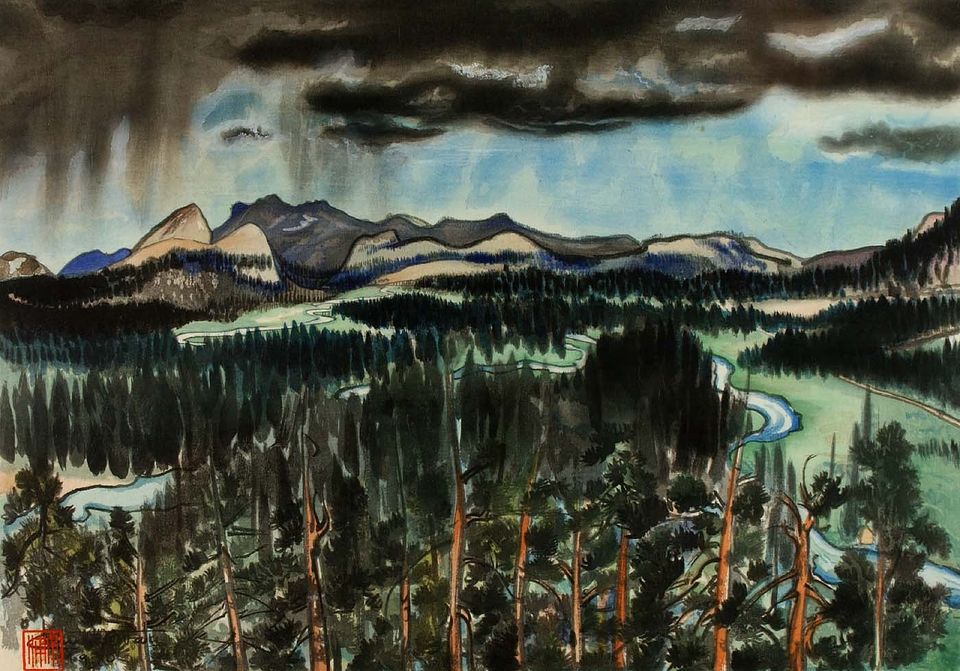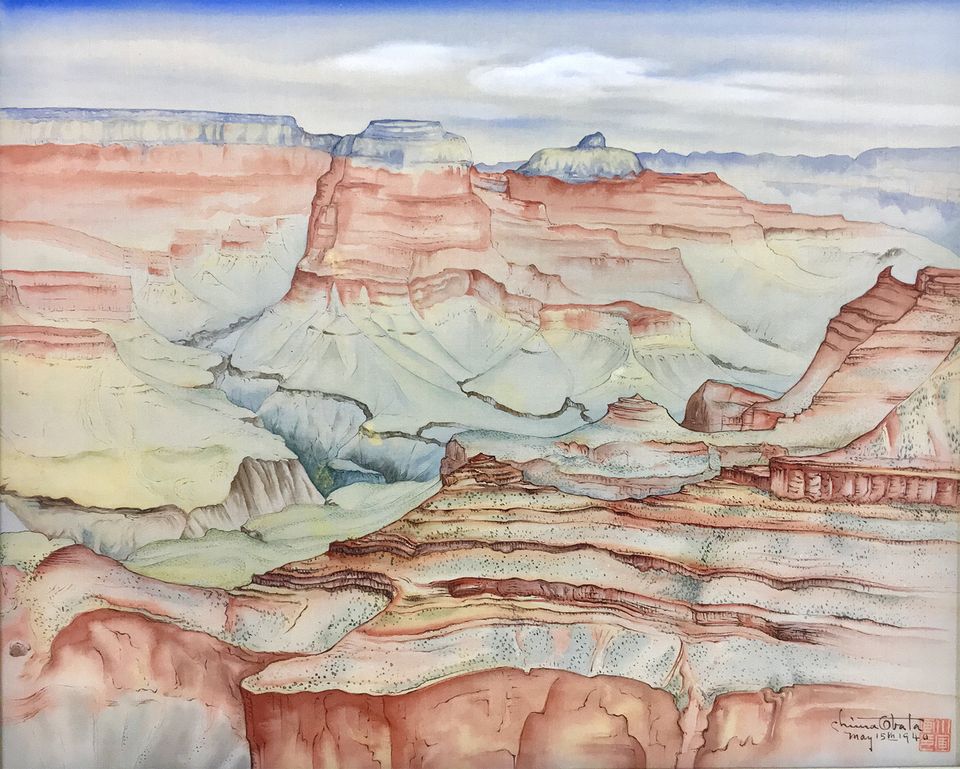Chiura Obata

- Also known as
- Zoroku Obata
- Born
- Okayama-ken, Japan
- Died
- Berkeley, California, United States
- Active in
- San Francisco, California, United States
- Biography
Chiura Obata (1885-1975) was one of the most significant Japanese American artists working on the West Coast in the last century. Born in Okayama, Japan, Obata emigrated to the United States in 1903 and embarked on a seven-decade career that saw the enactment of anti-immigration laws and the mass incarceration of Japanese Americans during World War II. But Obata emerged as a leading figure in the Northern California artistic communities, serving not only as an influential art professor at UC Berkeley for nearly twenty years, but also as a founding director of art schools in the [incarceration] camps. With a prodigious and expansive oeuvre, Obata's seemingly effortless mastery of, and productive engagement with, diverse techniques, styles, and traditions defy the dichotomous categorizations of American/European and Japanese/Asian art. His faith in the power of art, his devotion to preserving the myriad grandeur of what he called "Great Nature," and his compelling personal story as an immigrant and an American are all as relevant to our contemporary moment as ever.
ShiPu Wang, Chiura Obata: An American Modern (Santa Barbara: Art, Design & Architecture Museum, University of California, Santa Barbara, 2018), 10.















